Bamboo plants can create breathtaking landscape effects, from stately columns and elegant dividers to large, peaceful shade groves. They grow in a wide variety of colors, heights, and culm thicknesses, and behave in ways that make each species suitable for different applications. Although some bamboo species can grow indoors, the majority of them are best suited to grow outdoors. They are wonderful and versatile plants that have a variety of uses, not only in the landscape but also in the garden, the kitchen, and in the workshop.
Whether you’ve fallen in love with bamboo for its relaxing presence and visual appeal or for its practicality as a source of renewable material for construction and crafts, there is sure to be a bamboo cultivar that will suit your needs. In this guide, we’ll discuss a little bit about the physical characteristics of bamboo and then provide a short list of cultivars that you may wish to try out at home.
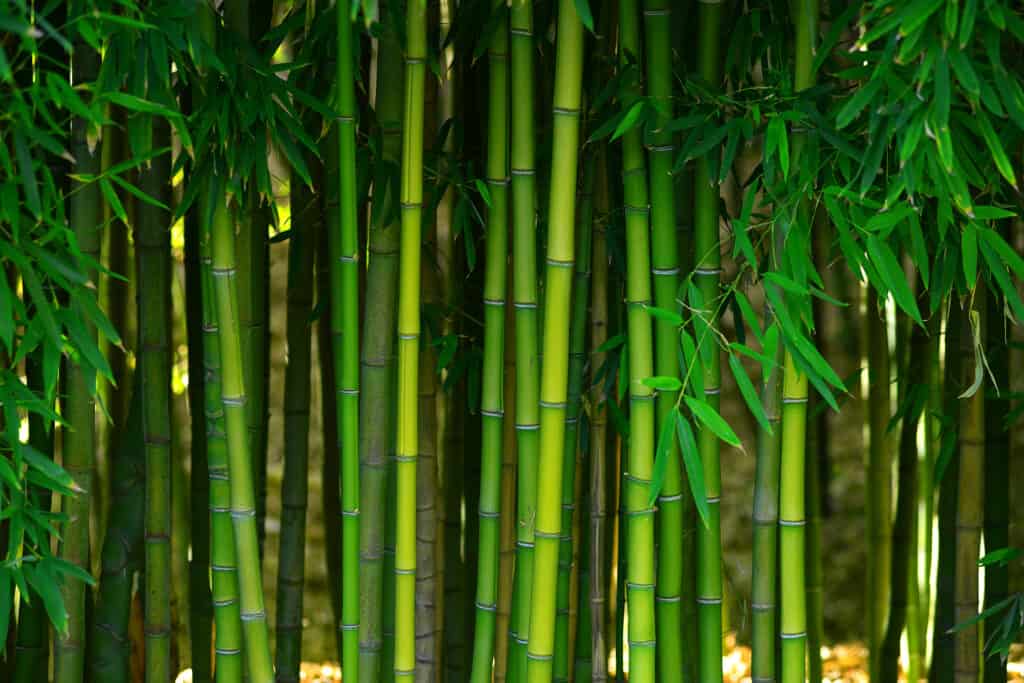
Bamboo plants can create breathtaking landscape effects, from stately columns and elegant dividers to large, peaceful shade groves.
©iStock.com/p-orbital
What Is Bamboo?
Bamboos make up a large group of rhizome-forming, generally woody grasses that belongs to the Bambusoideae family. There are around 100 genera of bamboo, and within those genera are classified over 1400 distinct species. Most members of this plant family thrive in moist, warm tropical and subtropical environments, but there are many who are native to mountainous regions and can tolerate cold winter temperatures.
The plants themselves grow from underground nutrient storage structures called rhizomes. A rhizome is simply a fleshy, horizontal stem that grows at or below ground level. Bamboo plants use this specialized stem structure to produce their roots and above-ground growth as well as to increase their overall footprint.
There are two main growth habits that bamboo rhizomes exhibit with regard to their rate of spread: running type growth, and clumping type. Most people are familiar with running bamboo species, which are those that tend to spread quickly and aggressively, shooting up new culms left and right. Although this can be a troublesome characteristic, these types of bamboo can be contained fairly easily with a little bit of effort. These species make for great ornamental privacy screens and dividing walls, as well as shade groves.
The second of these types, the clumping bamboo, is significantly less prone to escape. These species of bamboo grow much more slowly and methodically, forming dense clumps that can take many years to reach a significant diameter. Because of their slower growth and more compact growth habit, clumping bamboo species are easier to maintain. They can make for great privacy screens as well but are also wonderful for creating focal points in the landscape. Some cultivars can even be grown in containers.
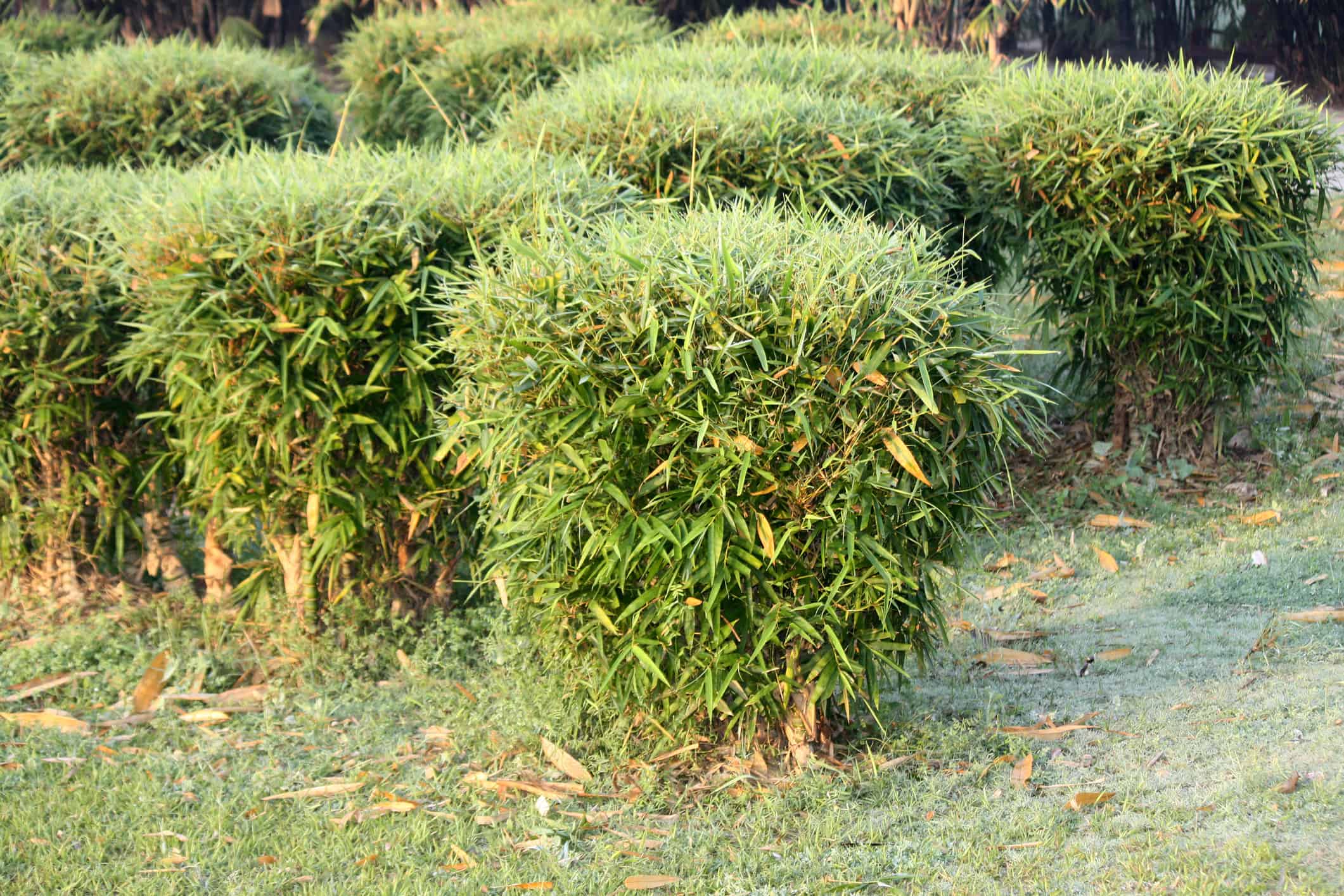
Clumping bamboo species grow slowly and methodically making them easier to maintain and wonderful for creating focal points in the landscape.
©iStock.com/Sanjiv Shukla
Bamboo Species To Grow Outdoors
While there are some cultivars of bamboo that can be grown as houseplants, many species just grow too large. The good news is that there is a vast number of tropical, subtropical, and temperate bamboo species that are more practically grown outdoors. With so much variety to choose from, there is sure to be a cultivar that is well-suited to your landscaping needs and aesthetics. Below, you’ll find a list of five particularly interesting and varied bamboo cultivars, as well as some information about their care requirements, to get you started in your search.
Black Bamboo (Phyllostachys nigra)
This running variety of bamboo is highly valued for the stunning visual contrast that it produces. While culms are green when they are young, they begin to turn dark brown as they age and finally settle into a deep purple or jet black when mature. Because this maturation process takes place over a couple of years, there is always a mixture of green and black culms.
Black bamboo of the Phyllostachys genus grows best in full sun or partial shade and, like other bamboos, prefers organically rich, moist, and well-draining soil. Like most running bamboo species, this one is commonly planted to create privacy screens and noise barriers. In the right conditions, it is able to fill this role rather quickly. While it is as adept or better than some of its relatives at creating dense colonies of growth, the black bamboo stands out as an incredible accent specimen.
Because members of this genus are running varieties and spread vigorously, you may want to put together a containment plan. Options for preventing unwanted rhizomatous spread include the installation of a solid rhizome barrier, trenching around the planting area, and continuous monitoring for and removal of unwanted shoots.
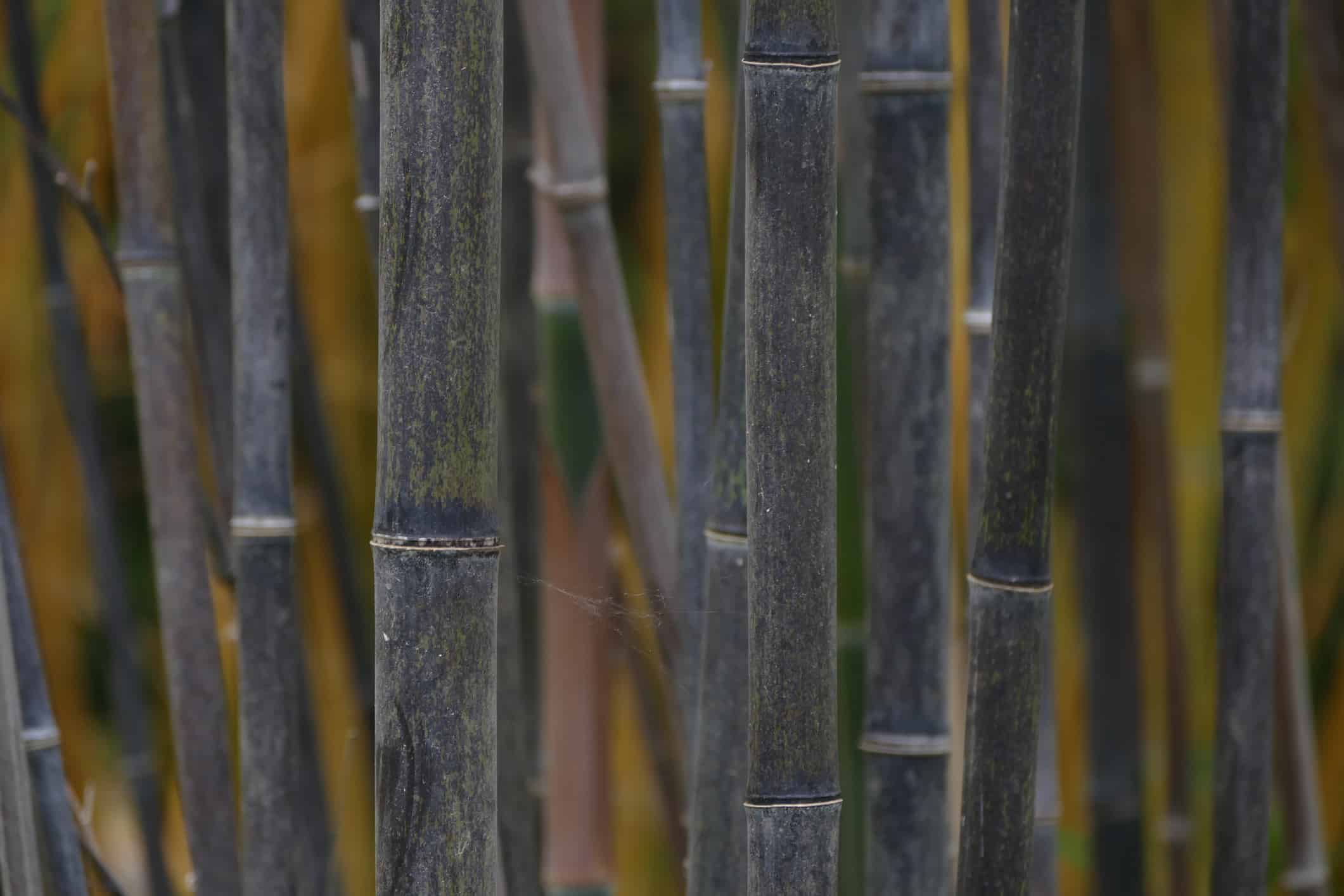
Black Bamboo presents as green when young, turning dark brown as it ages and finally settling into a deep purple or jet black when mature.
©iStock.com/Jannick Tessier
Umbrella Bamboo (Fargesia murielae)
Unlike most other clumping bamboo species, the umbrella bamboo is incredibly cold hardy. While the majority of its tropical relatives cannot handle cold temperatures, this species is able to tolerate winter freezes down to -20 degrees Fahrenheit. If you live in a more northern growing zone and are having trouble finding bamboo that can be grown outdoors in your climate, this one is an excellent choice.
Not only can umbrella bamboo handle cold weather with ease, but it is also very low maintenance. Because it is a clumping bamboo, it produces its growth in a tight, columnar fashion and should require very little attention to keep in check. Staying relatively short at about 15 feet in height, it also makes for a practical addition to the landscape. It produces excellent shade for garden benches or for shade-loving plants due to its top-heavy, arching growth habit.
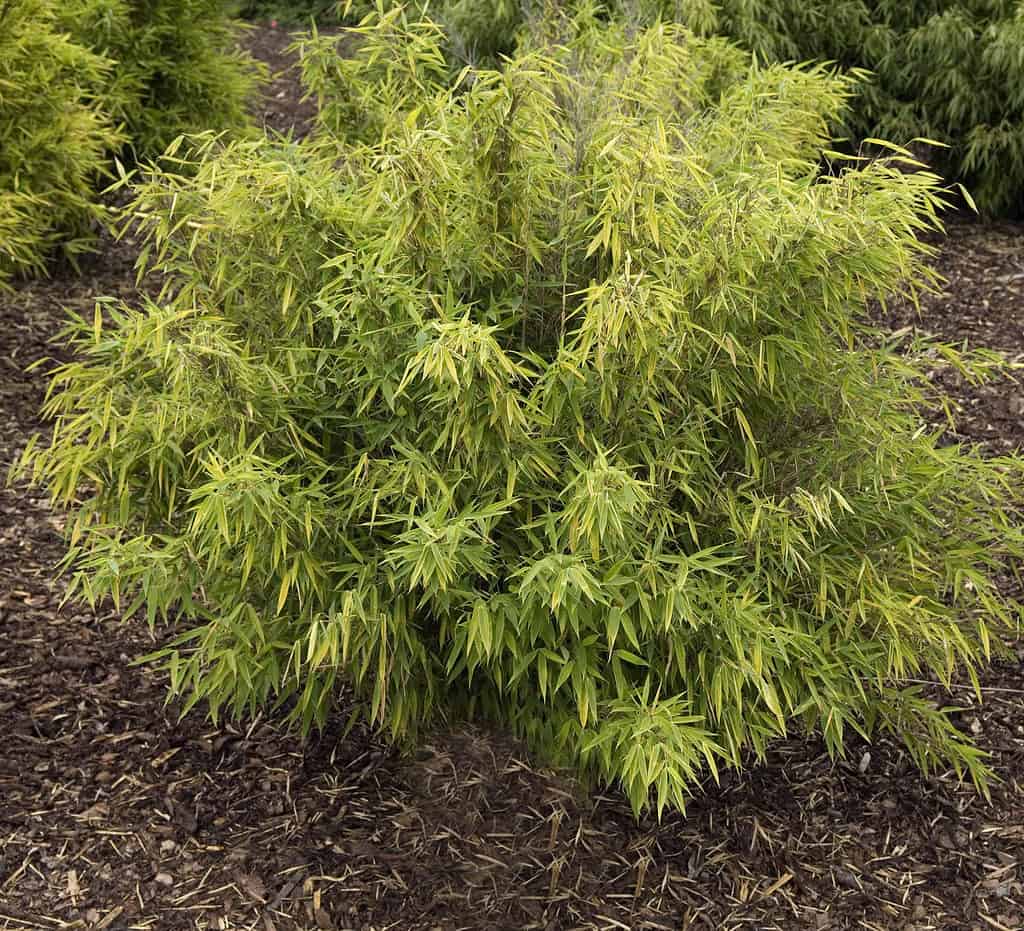
Umbrella bamboo is a clumping bamboo, producing its growth in a tight, columnar fashion, reaching roughly 15 feet in height.
©Manfred Ruckszio/Shutterstock.com
Japanese Giant Timber (Phyllostachys bambusoides)
The Japanese timber bamboo is an impressive specimen that stands out among other species of timber bamboo. With its towering 70-foot-tall culms that can reach an impressive 6 inches in diameter, it’s no wonder that this species is still used in construction trades today. Its thick culm walls and pronounced nodes make for stable scaffolding and building frames. While its culms are useful as a construction material, they also make for great privacy screens.
This species of bamboo, belonging to the genus Phyllostachys, is a running bamboo. If you’d like to grow this giant grass at home, it is likely worth it to consider a containment plan. It is easy to grow but requires full sun, ample space, and rich, well-drained soil in order to reach its maximum culm height of 70 feet. In shadier areas or when contained, it may only grow to about half that size.
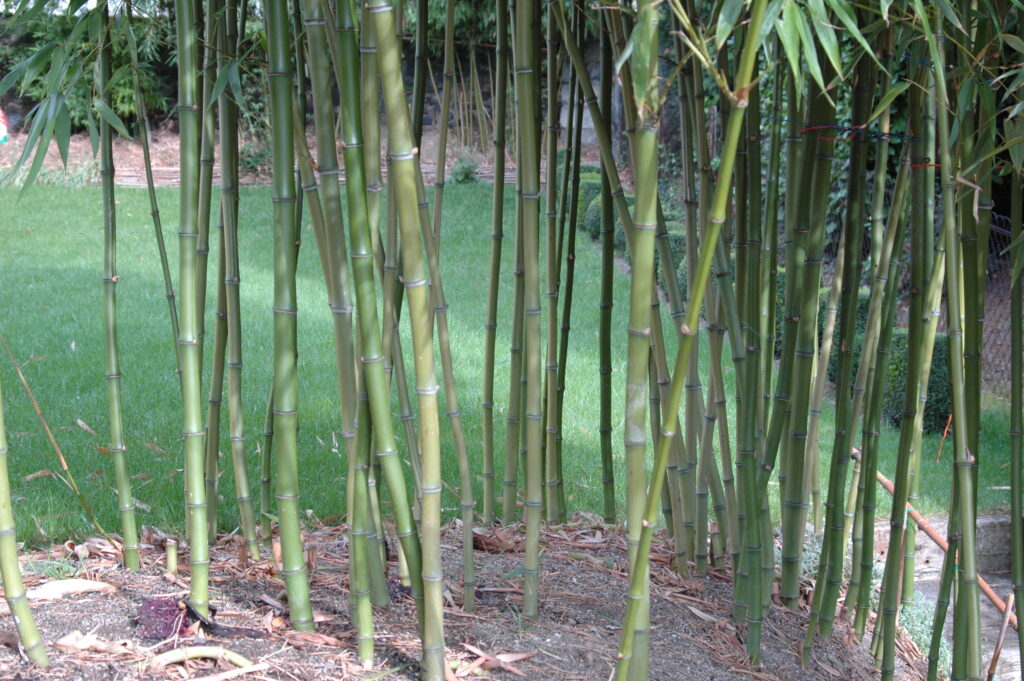
Japanese timber bamboo can reach heights of 70 feet with culms that can grow to 6 inches in diameter.
©Legmiche, CC BY-SA 4.0 <https://creativecommons.org/licenses/by-sa/4.0>, via Wikimedia Commons – License
River Cane (Arundinaria gigantea)
If you live in the eastern part of the U.S. and are worried about planting a non-native bamboo species, you may want to consider the river cane. One of three described species of native bamboo, the river cane has been used for centuries for weaving and basketry, as well as in the construction of homes. While its populations have declined drastically since the sixteenth century due to mass removal by humans, the river cane still provides important cover for wildlife and acts as a source of food in areas where it is still allowed to grow wild.
In its native range, the river cane grows predominantly alongside lakes and streams and in the floodplains of low-velocity rivers. Owing to its tough, hard rhizomes and vigorous growth habit, it can rapidly spread to form dense, bushy clumps. Its narrow culms can reach a maximum height of about 25 feet, but more commonly stay in the 8-20 foot range. For these reasons, it can make for an excellent privacy screen if allowed to establish.
If you are considering adding plants alongside a water feature in your landscape, such as a stream or pond, this species may be a good choice for you. Although it grows in areas that are prone to flooding, it should be noted that the river cane is unable to survive in areas where it remains submerged for long periods of time.
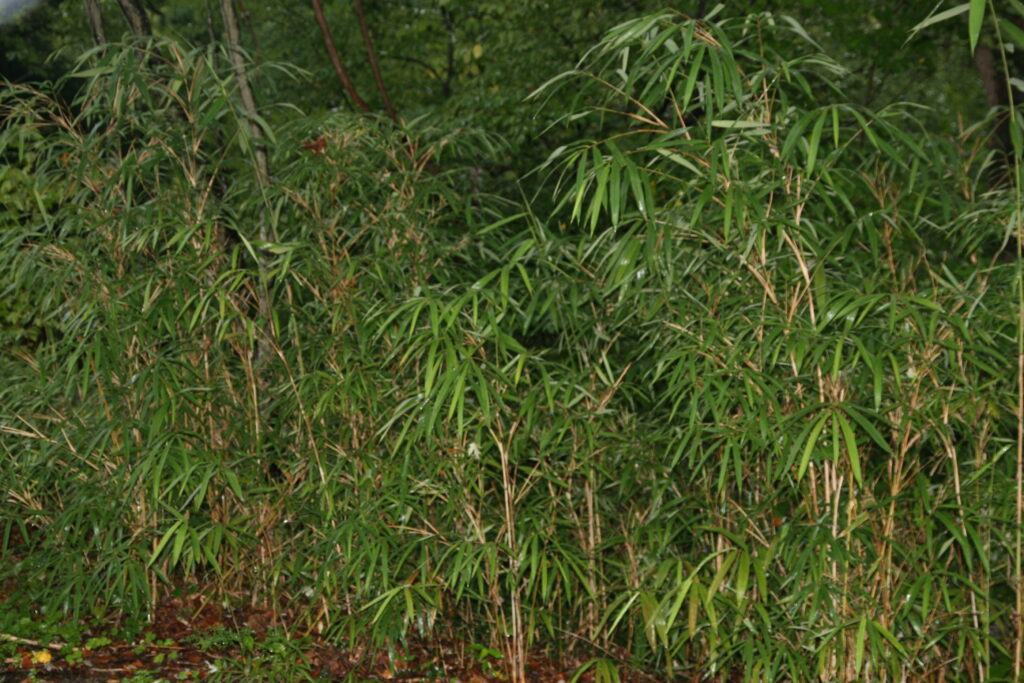
River cane grows predominantly alongside lakes and streams, rapidly spreading to form dense, bushy clumps.
©Photo by David J. Stang, CC BY-SA 4.0 <https://creativecommons.org/licenses/by-sa/4.0>, via Wikimedia Commons – License
Buddha Belly (Bambusa ventricosa)
If you live in an area that is limited in terms of space but are still interested in growing bamboo, this species is one worth considering. The buddha belly bamboo is a popular variety for use in container gardens. It is generally versatile with regard to its light requirements and can adapt to a range of soil conditions. It is, however, a tropical species and will not tolerate freezing temperatures.
When grown outdoors in conditions that mimic its tropical native environment, this species is able to reach heights of over 50 feet. When grown in a container, however, these plants can attain maximum heights of just 5-8 feet.
This comparatively small container size, however, is not its main appeal. When its rhizome is limited on resources, namely growing space and water, the plant produces culms made up of peculiarly round, bottom-heavy internodes from which it takes its name. This striking and unusual growth looks almost alien and makes for quite the conversation piece.
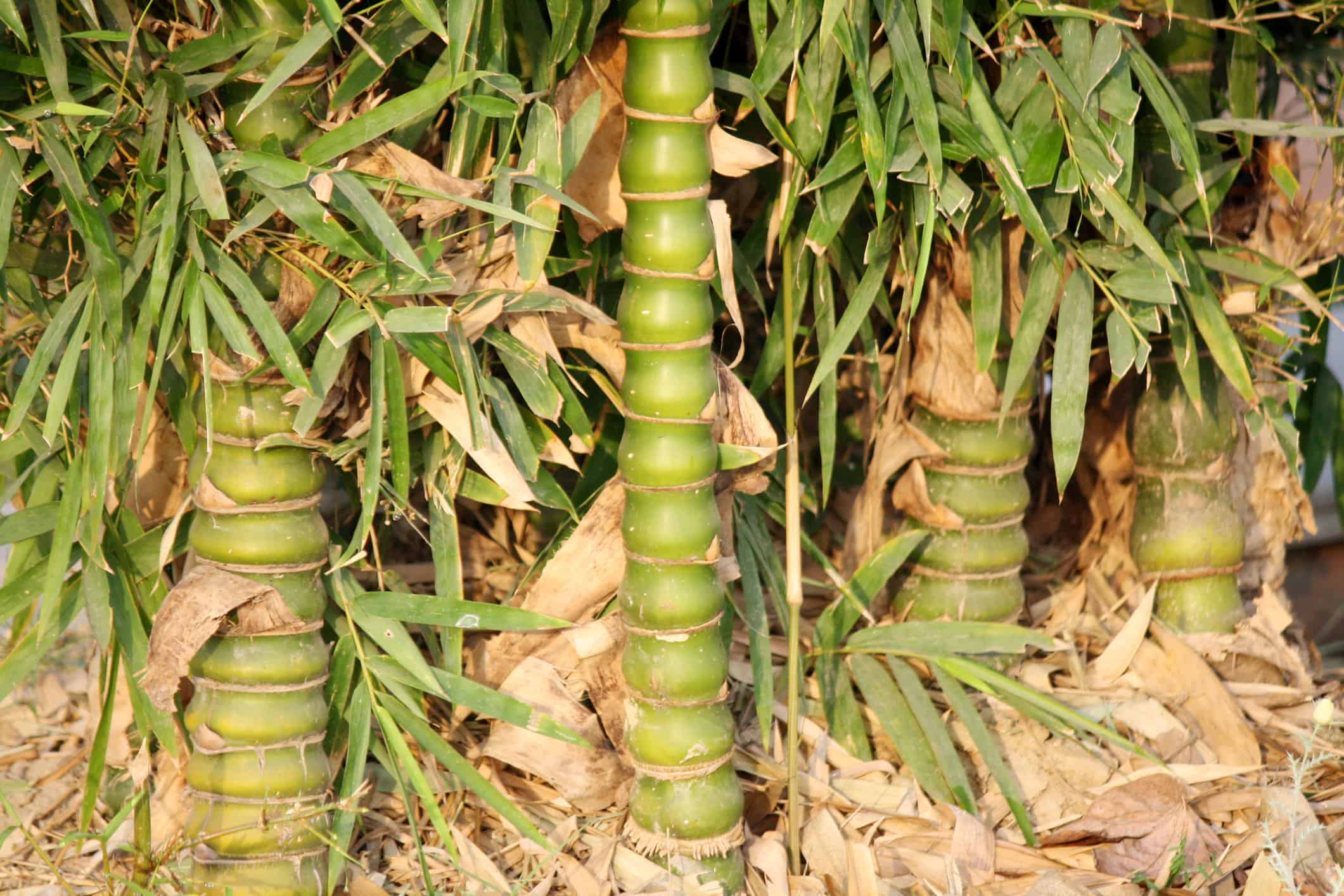
Buddha belly bamboo (
Bambusa ventricosa) gets its name from its bulging culms.
©iStock.com/Sanjiv Shukla
The photo featured at the top of this post is © iStock.com/Charlotte Bleijenberg
Thank you for reading! Have some feedback for us? Contact the AZ Animals editorial team.






